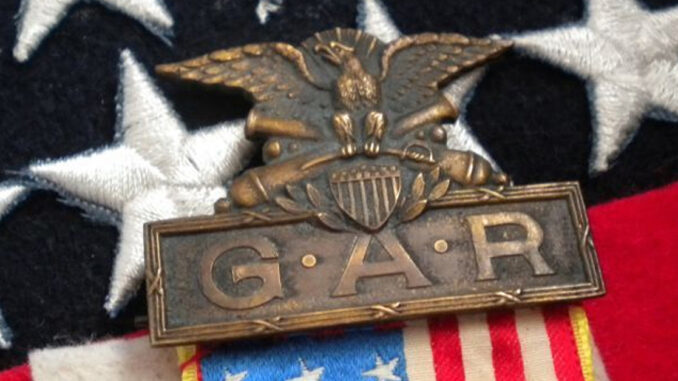
By Joseph Oettinger Jr.
SPECIAL TO PASCACK PRESS
WESTWOOD, N.J.—After the organizations of the Westwood Cornet Band (December 1873) and the Westwood Odd Fellows (circa March 1882), the Westwood G.A.R. (Grand Army of the Republic), organized on Dec. 10, 1885, became Westwood’s third major fraternal institution following the introduction of rail service through present-day Westwood on March 5, 1870. The G.A.R. was comprised of persons who had served honorably in the Union’s armed forces during the War of the Rebellion, now identified as the Civil War. The national organization had been established in Illinois in 1866.
The post was initially known as Post No. 101, G.A.R. After the death of General Gabriel R. Paul on May 5, 1886, the post was renamed Gabriel R. Paul Post No. 101, G.A.R. The Paul Post was one of four G.A.R. posts in Bergen County; the others were instituted in Carlstadt (Custer, 1878), Hackensack (McPherson, 1881), and Englewood (Dwight, 1887).
The Paul Post traveled to Washington, D.C., in December 1886 and participated in services associated with the placement of a monument over General Paul’s grave at Arlington National Cemetery. Members who were veterans of the Twenty-second Infantry Regiment, New Jersey Volunteers, had taken part in the Battle of Chancellorsville, Virginia (May 2–6, 1863), as part of General Paul’s Third Brigade, First Division, First Army Corps, Army of the Potomac. The Twenty-second Regiment mustered out of service at Trenton on June 25, 1863.
General Paul subsequently lost his eyesight at the Battle of Gettysburg on July 1, 1863, when a rifle ball entered his right temple, severed his right optic nerve, and exited his left eye.
I was able to locate 35 Civil War veterans in Westwood Cemetery. Twenty-nine were veterans of the Twenty-second Infantry Regiment. Of those 29, three served in Company C, 24 served in Company D, one served in Company H, and one served in Company I.
Of the remaining six veterans, two served in New York cavalry regiments, two served in New York infantry regiments, one served in a New York heavy artillery regiment, and one served in the U.S. Navy.
Of those 35 Civil War veterans in Westwood Cemetery, I was able to identify 17 Gabriel R. Paul Post No. 101, G.A.R. members. Two had served in Company C of the Twenty-second Infantry Regiment, 12 in Company D, one in Company I of the Fifth New York Cavalry Regiment, one in Company G of the Forty-eighth New York Infantry Regiment, and one in the Union Navy on the USS New Berne.
The Paul Post held meetings, lobbied for veteran benefits, assisted veterans, conducted memorial services for fallen comrades, attended annual inspections, reunions, and encampments, participated in parades, and notably decorated the graves of veterans for Decoration Day.
In 1894, the Paul Post decorated veterans’ graves with flags and flowers at Pascack, Saddle River, Valleau, Christian Reformed, Old Hook, North Church, Schraalenburgh, and Tappan cemeteries.
In 1895, the post decorated graves at Pascack, Saddle River, Valleau, and Old Hook. From 1899 through 1903, graves were decorated at Pascack, Valleau, and Old Hook.
To give some perspective to the grave decoration detail: a 1902 news account reported that post members were transported to cemeteries in wagons; a 1903 account said they traveled by stage—both horse-drawn conveyances.
In 1904, the Paul Post decorated veterans’ graves at Pascack, Valleau, Lutheran, Pearl River, Tappan, Closter, Dumont, and Old Hook cemeteries. The post had ordered 300 plants for this effort.
Around Decoration Day 1888, the Paul Post had 40 members. By Decoration Day 1893, that number had grown to 68. But by Oct. 26, 1905, it had declined to 41. Since G.A.R. membership was restricted to Civil War veterans, the organization had a limited life expectancy—unlike later-formed veterans’ groups such as the VFW and American Legion, whose memberships are not limited to a single conflict.
By June 12, 1924, the Paul Post had declined to 10 members; by May 28, 1927, it had declined to five.
Westwood’s Benjamin F. Smith died on March 20, 1931, leaving Emerson’s Henry J. Herring as the last man standing. Herring died on Feb. 15, 1934. His death notice, on page 2 of the Bergen Evening Record on Feb. 16, 1934, reported that the Gabriel R. Paul Post had been forced to disband several years earlier.
